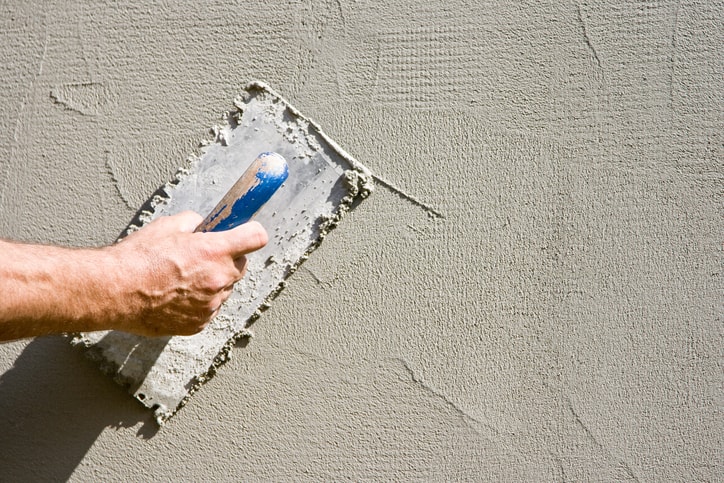

Otherwise, earlyshrinkage of the Plaster can result in map cracking (Fig. If paper-backed lath is used, laps should be installed to allowa paper-paper and lath-lath placed Plaster must be protected from excessive moistureloss in the first few days after application. Lath should be lapped 13 mm (1/2 in.) at the sides and 25 mm (1 in.) at the ends (ASTM C 1063), with wire tiesspaced 230 mm (9 in.) apart.

Rules for lath installation include: Lath should not be continuous at control joints.

ĥ If lath is installedincorrectly, sufficient tensile stresses can develop within theplaster to cause it to crack. Joints should be positioned at movement joints in the wood-frame Plaster construction, metal lath expands andcontracts with the surrounding Plaster. No panel should have a length-to-width ratio greater than 2-1/2 to 1. Distance between joints should be no more than m (18 ft)in any direction. Dryingshrinkage cracks are often caused by violating the rules ofcontrol joint spacing (ASTM C 1063): Each continuous vertical area should be no more than m2(144 ft2). Water that getsbehind the Plaster can cause woodlath to rot and metal lath and nailsto rust, and can cause Plaster todelaminate from the in Plaster is usuallyshrinkage-related or the result ofexternal loads, such as groundsettlement or inadequate stiffness of the backing.Ĥ Common causes of cracking are improperly placed control joints, improper lathinstallation, and inadequate joints are provided in Plaster to relieve drying shrinkagestresses and to provide stress relief in areas subjected tomovement, such as window and door openings. In manycases, damage results from waterinfiltration into the buildingstructure either through cracks,through the roof, aroundchimneys, or through window anddoor openings. Portland Cement Plaster is often applied to metal lath attached to frame of Portland Cement Plaster ( stucco ) Causes of PlasterDamagePortland Cement Plaster can deteri-orate for a variety of reasons,including inadequate designdetails, poor installation, or the useof improper materials. Thispublication does not address synthetic Plaster (EIFS) systems.ģ 2001 Portland Cement AssociationIS526 All rights reservedIntegrating patches into the existing Plaster is oneof the many challenges of Plaster Repair. Thismanual presents recommended procedures forrepairing Portland Cement Plaster.

Although Cement Plaster provides ahard, durable cladding, it is not intended toresist building movements, such as those fromsettlement or the expansion of wood framemembers as a result of moisture intrusion. Plaster has proved to be a durable wall covering in allclimates and has great appeal as a surface finish because of itsutility, low first cost, and need for minimal like all building materials, Plaster deteriorates with age andexposure to the elements. Portland Cement Plaster has many qualities that make it a desirablefacing material, including hardness, fire resistance, and attractiveappearance. The first coat is oftenreferred to as the scratch coat, the second is the brown coat, andthe third is the finish coat (Fig.)Ģ 1). When applied to metal lath, three coats of plasterform a 22-mm (7/8-in.) total thickness. Applied directly to concrete or masonry, Plaster provides atough, 13-mm (1/2-in.) thick facing that is integrally bonded tothe substrate. It may be applied directly to a solid base, such asmasonry or concrete walls, or it can be applied to metal lathattached to frame construction, masonry, or concrete construction. Plaster is applied either byhand or machine to exterior and interior wall surfaces in two orthree coats. Portland cement plaster (stucco) is a building facing material consisting of portland cement-based materials and sand, mixed with water to form a workable mixture.ġ Portland Cement Plaster ( stucco ) is a building facing materialconsisting of Portland Cement -based materials and sand, mixedwith water to form a workable mixture. The first coat is oftenreferred to as the scratch coat, the second is the brown coat, andthe third is the finish coat (Fig.) Portland Cement Plaster ( stucco ) is a building facing materialconsisting of Portland Cement -based materials and sand, mixedwith water to form a workable mixture. Example: marketing Search Repair of Portland Cement Plaster (Stucco).


 0 kommentar(er)
0 kommentar(er)
